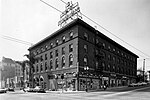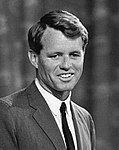Koreatown, Los Angeles

Koreatown (Korean: 코리아타운) is a neighborhood in central Los Angeles, California, centered near Eighth Street and Irolo Street.Koreans began immigrating in larger numbers in the 1960s and found housing in the Mid-Wilshire area. Many opened businesses as they found rent and tolerance toward the growing Korean population. Many of the historic Art deco buildings with terra cotta façades have been preserved because the buildings remained economically viable for the new businesses.Despite the name evoking a traditional ethnic enclave, the community is complex and has an impact on areas outside the traditional boundaries. While the neighborhood culture was historically oriented to the Korean immigrant population, Korean business owners are creating stronger ties to the Latino community in Koreatown. The community is highly diverse ethnically, with half the residents being Latino and a third being Asian. Two-thirds of the residents were born outside of the United States, a high figure compared to the rest of the city.
Excerpt from the Wikipedia article Koreatown, Los Angeles (License: CC BY-SA 3.0, Authors, Images).Koreatown, Los Angeles
Wilshire Boulevard, Los Angeles Koreatown
Geographical coordinates (GPS) Address Nearby Places Show on map
Geographical coordinates (GPS)
| Latitude | Longitude |
|---|---|
| N 34.0618 ° | E -118.3006 ° |
Address
Wilshire & Normandie
Wilshire Boulevard
90010 Los Angeles, Koreatown
California, United States
Open on Google Maps






